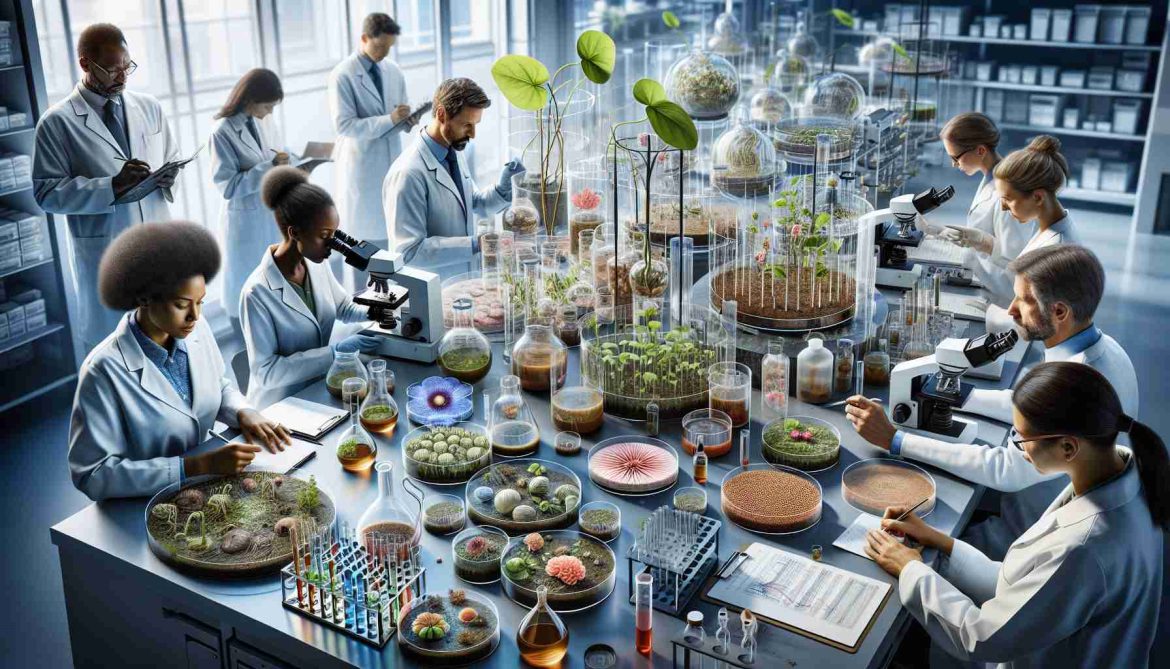- The Plant Tissue Culture Market is projected to grow at a 9.1% CAGR from 2025 to 2032, emphasizing precision agriculture’s rising significance.
- This industry supports global food security by enabling efficient and resilient crop production through plant cloning and propagation.
- Key players like Thermo Fisher and Merck KGaA lead the market, creating competitive dynamics and strategic opportunities.
- Emerging markets present new opportunities, with regional differences in Asia-Pacific, Europe, and North America offering diverse challenges and strategies.
- The industry’s growth is accompanied by challenges such as regulatory and technological demands, stressing the need for strategic planning.
- The plant tissue culture sector is crucial for sustainable agriculture, offering opportunities for agile stakeholders to shape a greener future.
A silent revolution unfolds as the Plant Tissue Culture Market prepares to soar at an impressive 9.1% CAGR from 2025 to 2032. This nascent industry’s ascent highlights the increasing demand for precision in agriculture and biotechnology, drawing the eye of decision-makers worldwide.
Imagine lush greenhouses thriving with rows of identical plants, each a clone of its neighbor, ready to combat global food insecurity with efficiency and resilience. These facilities become the vanguard of a movement redefining how we cultivate crops. From bananas to ornamental plants, the industry offers an array of meticulously propagated specimens, catering to both agriculture and research sectors.
While these tiny plant factories promise a bounty of innovation, they also bring forth fierce competition among industry’s giants like Thermo Fisher and Merck KGaA. These heavyweights engage in a high-stakes chess match, strategizing growth and dominance. Emerging markets peel back layers of opportunity, inviting stakeholders to carve their niche, leveraging the intricate art of plant multiplication and hardening stages.
Yet, this is more than a mere numbers game. Behind growth percentages lie crucial challenges, from regulatory hurdles to technological demands. As the landscape shifts, understanding regional dynamics becomes essential; the bustling markets of Asia-Pacific differ vastly from the more established networks in Europe and North America.
The takeaway here is undeniable: as the global population burgeons, the plant tissue culture industry stands at a pivotal point, ready to redefine sustainable agriculture. Stakeholders with foresight and agility can harness this burgeoning market, paving the way for a greener future. Embrace the change, and find your place amid the chlorophyll-infused revolution.
The Leafy Wave of the Future: Unveiling the Plant Tissue Culture Market Boom
The Plant Tissue Culture Market is on the cusp of a significant growth spurt, projected to expand at a 9.1% Compound Annual Growth Rate (CAGR) from 2025 to 2032. This burgeoning field is at the heart of advancements in agriculture and biotechnology, driven by the increasing need for precision and sustainability in crop production. But beyond the promising market figures and technological innovations, what truths and insights lie beneath the surface of this silent revolution?
Plant Tissue Culture: An Overview
Plant tissue culture involves the propagation of plants through cloning, allowing for the production of identical plant specimens in controlled environments, like greenhouses. It caters to a wide array of plants ranging from essential agricultural crops to ornamental varieties, playing a critical role in global food security and biodiversity conservation.
How It Works
1. Selection of Plant Material: It starts with selecting a suitable piece of plant tissue.
2. Sterilization: To eliminate any microorganisms, the tissue is sterilized.
3. Culture Medium: The sterilized tissue is placed in a culture medium containing nutrients and growth hormones.
4. Multiplication: Under controlled conditions, the tissue multiplies, leading to the desired number of clones.
5. Hardening: The young plants known as plantlets are gradually acclimatized to outdoor conditions.
Pros and Cons
Pros:
– Rapid Multiplication: Enables mass propagation of plants in a short time.
– Disease-Free Plants: Produces uniform and disease-free plants.
– Conservation of Rare Species: Helps in the conservation of endangered plant species.
Cons:
– High Initial Costs: Setup and running costs can be significant.
– Technical Expertise Needed: Requires skilled personnel for operation.
– Regulatory Challenges: Various countries have stringent regulations that can hinder market entry.
Market Forecasts and Trends
The plant tissue culture market’s growth is propelled by technological advancements, increasing research activities, and the growing need for sustainable agriculture solutions. It is anticipated that the Asia-Pacific region will drive significant demand, fueled by expanding population and agricultural activities.
Competitor Analysis
Major players like Thermo Fisher Scientific and Merck KGaA are heavily investing in research and development to gain a competitive edge. These companies are focusing on innovation and strategic partnerships to tap into emerging markets and enhance their market presence.
Challenges and Controversies
– Regulatory Challenges: Varying regulations across countries may slow down the expansion of plant tissue culture techniques.
– Technological Barriers: The need for constant technological upgrades and innovations can pose a challenge for smaller companies.
Use Cases and Innovations
Plant tissue culture is increasingly used for biofuel production, pharmaceutical applications, and the development of genetically modified plants. Innovations are focusing on automation and AI integration to enhance the efficiency of tissue culture processes.
Security Aspects and Sustainability
The controlled environments for plant tissue culture are designed to prevent contamination and ensure the security of the plant material. Sustainability is enhanced through the reduction of resource use compared to traditional agriculture.
Predictions
The future of the plant tissue culture market looks bright, with expectations of expanded applications in urban farming and vertical agriculture. As research progresses, new plant varieties with improved traits like drought resistance and enhanced nutritional value are likely to emerge.
Conclusion
The plant tissue culture industry is poised to play a pivotal role in redefining sustainable agriculture. By embracing this technological marvel, stakeholders can contribute to a greener and more food-secure future. As this sector continues to grow and evolve, staying informed will be key to harnessing its full potential.
For more insights into the broader implications of this market, visit Thermo Fisher Scientific and Merck KGaA.


